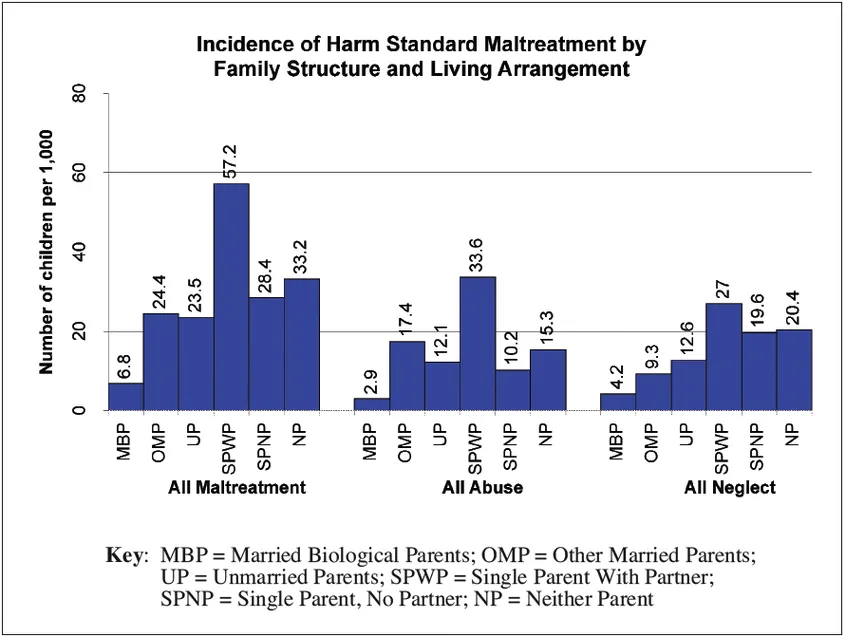One of the most distressing consequences of the decline of the traditional family based on marriage has been the association between ‘alternative family structures’ and the abuse or neglect of children.
Children don’t fare so well when they don’t have their mother and father looking out for their interests, but for many years this was a controversial thing to say. Proponents of alternative lifestyles would counter that there was no evidence to show that any family type carried a higher risk than another. This was to a certain extent true, because there was no official data on child abuse that broke down cases by family type, beyond the excellent dataset maintained between 1973 and 1990 by the NSPCC on behalf of those local authorities for which the charity managed their child protection registers. The NSPCC figures distinguished between one-parent and two-parent households, and indicated whether both adults were natural parents or not. However, they did not include any reference to marriage. The official government statistics, which became the only source of information after the closure of the NSPCC project in 1990, broke down cases by gender and local authority only.
Risk by family structure
However, Peter Thirlby, a member of the Family Education Trust changed the situation in the early 1990s. Mr. Thirlby, a retired civil servant, had been in the habit of visiting the British Museum library during his lunch-breaks, where he had begun to study all the material that was available on child abuse containing details of family background. He was acting on his instinctive feeling that there must be a link between non-marriage and risk to children, and that the evidence must be out there somewhere. He studied 35 public enquiry reports into the deaths of fatally abused children between 1969 and 1987. He also examined the cases of child abuse reported in the Family Court Reporter between 1987 and 1997, involving 141 children. Adding to the information he found through studies published in academic journals, he was able to compile a dataset that had no parallel in the world. Not only was he able to show that two-natural-parent families are comparatively safe environments, but he was able to demonstrate that marriage has a protective factor in and of itself. Not only are the children of married couples safer than the children of cohabiting couples, but the children living with mothers married to men who were not their biological fathers (stepfathers in the original sense) were at lower risk than children living with both natural parents who were cohabiting.


